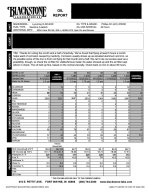I say...yes!
I made NO indication on my Blackstone slip that small amounts of ferrous metal had been found in the oil filter to see if it could be caught in the sample analysis, only that there was a small chunk of inactivity in the January while I was in training.
At the time I took the sample, I knew there was a bit of metal but I had not known the source (eventually determined to be cam/lifter).
I knew analysis was good tool, but now I highly recommend! Blackstone nailed it!
I made NO indication on my Blackstone slip that small amounts of ferrous metal had been found in the oil filter to see if it could be caught in the sample analysis, only that there was a small chunk of inactivity in the January while I was in training.
At the time I took the sample, I knew there was a bit of metal but I had not known the source (eventually determined to be cam/lifter).
I knew analysis was good tool, but now I highly recommend! Blackstone nailed it!
Attachments
Last edited:





